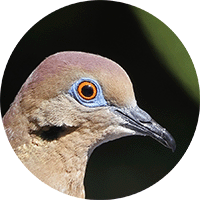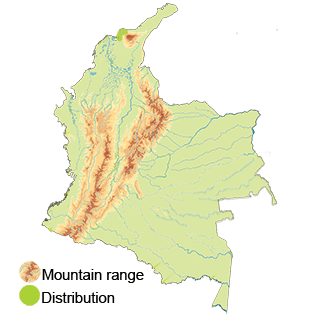White-winged Dove
The White-winged Dove (Zenaida asiatica). Read in Spanish
Appearance: The White-winged Dove is a medium-sized bird with a distinct appearance characterized by a pale gray body and a noticeable white band across its wings in flight. It has red eyes, a pinkish patch of skin around the eyes, and a long, tapered tail. The underparts of the bird are typically a lighter gray color compared to its wings and back.
Habitat: White-winged Doves are versatile in their habitat preferences and can be found in a wide range of environments, including forests, woodlands, scrublands, agricultural areas, and urban areas. They are commonly seen in both lowland and foothill regions, as well as in open areas with scattered trees and water sources.
Behavior: White-winged Doves are generally social birds and can be seen in small to large flocks, especially around food sources. They feed on a variety of seeds, fruits, and grains, often foraging on the ground or perching in trees to search for food. Their flight is characterized by strong, direct wingbeats interrupted by short glides.
Breeding: White-winged Doves typically breed during the spring and summer months in Colombia. They build loose, flimsy nests made of twigs, grasses, and other plant materials in trees or shrubs. The female usually lays 1-2 eggs, and both parents participate in incubation and caring for the young.
Conservation Status: The White-winged Dove is not currently considered globally threatened and is listed as a species of Least Concern by the IUCN.
Distribution
The White-winged Dove (Zenaida asiatica)
Caribbean Coast: Along the Caribbean coast of Colombia, in departments like Atlántico, and Magdalena, the White-winged Dove is known to occur in both rural and urban areas.
Other Regions: In addition to the major regions mentioned above, the White-winged Dove's distribution in Colombia likely extends to other areas such as San Andres and Providencia
Taxonomy
The White-winged Dove (Zenaida asiatica)
- Kingdom: Animalia
- Phylum: Chordata
- Class: Aves (Birds)
- Order: Columbiformes
- Family: Columbidae
- Genus: Zenaida
- Species: Zenaida asiatica
Vocalization
The White-winged Dove (Zenaida asiatica)
- Song: The song of the White-winged Dove is a characteristic series of mournful, cooing "who-cooks-for-you" notes that are repeated at regular intervals. The sound is often described as a melodic, rhythmic cooing pattern. Their song is composed of three syllables – the first two notes are cooed at a higher pitch, followed by a lower-pitched "for-you" note
- Calls: Outside of their typical song, White-winged Doves produce various calls for different purposes. They may emit a soft, rapid series of coos as they fly or when perched, signaling agitation or alertness. When disturbed or threatened, White-winged Doves can produce a loud clapping noise with their wings, which is a form of alarm signal
- Communication: White-winged Doves use their vocalizations as a means of communication within their species. These sounds help establish and maintain territories, attract mates, and coordinate breeding and feeding activities.
- Territorial Calls: Male White-winged Doves often use vocalizations to defend their territories from intruders. They may intensify their song or calls to signal ownership of a specific area.
- Breeding Season: During the breeding season, the White-winged Dove's vocalizations may become more frequent and pronounced as individuals engage in courtship displays and defend nesting sites.
- Social Interactions: Vocalizations also play a role in social interactions among White-winged Doves. They can convey information about individual identity, location, and intention to other doves in their vicinity.





